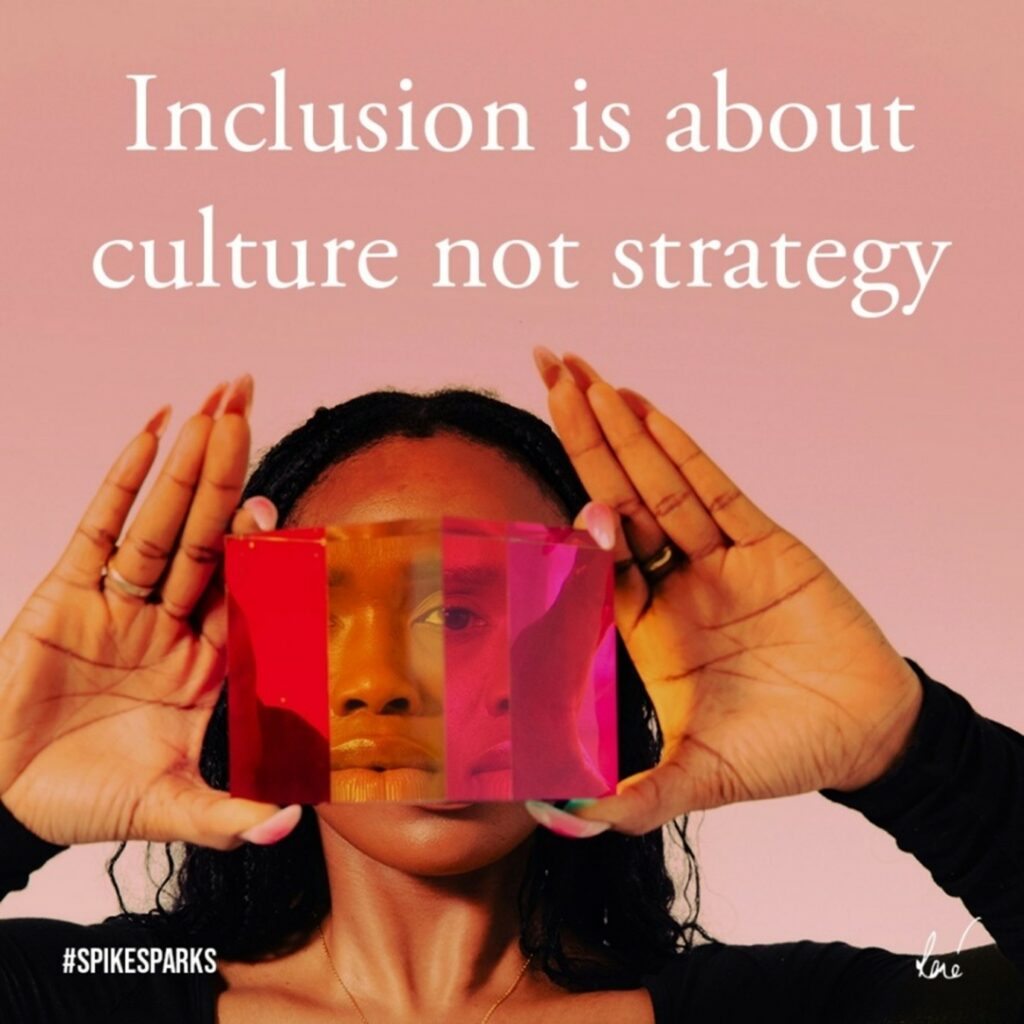Why Inclusion and Mental Health Go Hand in Hand
Key Highlights & Thoughts of the Week
✅ Inclusion fosters mental well-being in diverse workplaces.
✅ Creating a culture of inclusion retains top talent.
✅ Diversity and inclusion speakers emphasize the power of feeling valued.
✅ Businesses that prioritize inclusion see higher engagement and productivity.
Takeaways
- 🚀 Want to learn more?
- Join our Spike Sparks Community and stay updated!
Introduction
In today’s multicultural work environments, the significance of inclusion in supporting mental health cannot be overstated. Individuals from varied cultural backgrounds often encounter unique challenges that can impact their mental well-being. Thus, creating an inclusive culture that acknowledges and supports these diverse experiences is vital.
We’ve entered a time where diversity and inclusion should be discussed everywhere, it should be felt and seen by all, especially when we have so much potential around us. Diversity and inclusion aren’t filling a quota, it’s doing the right thing, and it’s doing the smart thing.
How Do We Make Someone Feel Included?
Inclusion begins by understanding the cultural factors that affect mental health. It’s about recognising that everyone’s experience is different, shaped by their background and cultural context.
By fostering open dialogues, providing culturally sensitive resources, and creating spaces where everyone feels safe to express their authentic selves, organisations can better support the mental health of their diverse teams.
What makes teams great is the diversity amongst colleagues, but it isn’t enough to just create a diverse team—they must also be inclusive.
It’s important for us all to understand that for someone to feel included, we need to understand what inclusion is, and there are ways to learn.
I may be biased, having been a diversity and inclusion speaker myself, but bringing in the experts can often be the perfect way. There are some phenomenal diversity and inclusion keynote speakers dedicating their time and career to helping leaders, businesses, and teams foster an inclusive culture for all to thrive in.
Many of these diversity, equity, and inclusion speakers have experienced the unfortunate trauma of exclusion, and therefore can make stories even more powerful—but for many, a lot more relatable.
What is the Impact of Diversity, Equity, and Inclusion Speakers?
Seeing or hearing relatable content from diversity and inclusion speakers is so important—it puts things into reality, allows us to walk in the shoes of others, and gives us someone who has also walked in our shoes.
Diversity and inclusion still get neglected, but when practiced, the personal and professional impact it has is often irreplaceable.
Having been a diversity & leadership speaker for many years now, it shocks me to see the lack of focus on diversity, equity, and inclusion practices in some businesses—it’s not just about physical diversity, it’s about mental diversity too.
As mentioned before, experts matter—a diversity and inclusion speaker being part of your monthly or quarterly events will boost people’s well-being as they feel heard and understood. Eventually, the work of these diversity and inclusion speakers is embedded into each colleague, and inclusion becomes natural.
How Leadership Mentality Affects Inclusion & Mental Health
Adopting the appropriate leadership mentality to ensure your team thrives is essential. Not everyone is the same, not all colleagues operate in the same way, and we certainly do not all have the same strengths.
Giving your team a space to belong, a place to feel included, will boost mental well-being.
An inclusive environment allows individuals from varied backgrounds to feel respected and valued, which is crucial for maintaining mental well-being.
By fostering a culture where everyone can express their authentic selves without fear of judgment or exclusion, organisations can significantly reduce stress and anxiety among employees.
Inclusion means recognising and appreciating the unique cultural perspectives and experiences that each person brings.
It involves creating a supportive environment that caters to individual needs, ensuring everyone has access to resources and support systems suited to their cultural background.
This approach not only enhances overall mental health but also promotes a sense of belonging and empowerment.
In essence, when we include and support all voices, everyone has the opportunity to thrive, making our organisations stronger and more innovative.
Key Strategies for Inclusive Support
✅ Culturally Sensitive Resources – Offer mental health resources that reflect and respect diverse cultural perspectives.
✅ Open Dialogue – Promote conversations about mental health that are inclusive of different cultural viewpoints.
✅ Safe Spaces – Create environments where individuals feel comfortable and supported in sharing their experiences.
Embedding these inclusive practices ensures that mental health support is accessible and effective for all, fostering a healthier, more productive workplace.
Final Thought: Inclusion & Mental Health Go Hand in Hand
Can today’s leaders prioritize both inclusion and mental well-being? Absolutely. But they can no longer do it alone.
To create truly inclusive workplaces, we must recognize that mental health and inclusion are interconnected.
By investing in inclusive leadership, companies can build stronger, more resilient teams, where everyone feels valued, seen, and heard.
PS: To include everyone takes time, but shifting to an inclusive mindset only takes a moment.
Top Tips for Becoming an A-Player
🔥 Be open to different perspectives.
🔥 Understand that mental health is part of inclusion.
🔥 Create an environment where every voice matters.
🔥 Support colleagues who feel unheard.
🔥 Never stop learning—inclusion is a journey, not a checkbox.
Further Reading & Learning
📖 Want to develop stronger inclusive workplaces that support mental health?
Check out this resource: Find More on Diversity and Inclusion Here
Engage With Us!
💬 Did you enjoy this article? Share your thoughts in the comments!
📲 Follow us on social media for more insights on leadership & inclusion.

